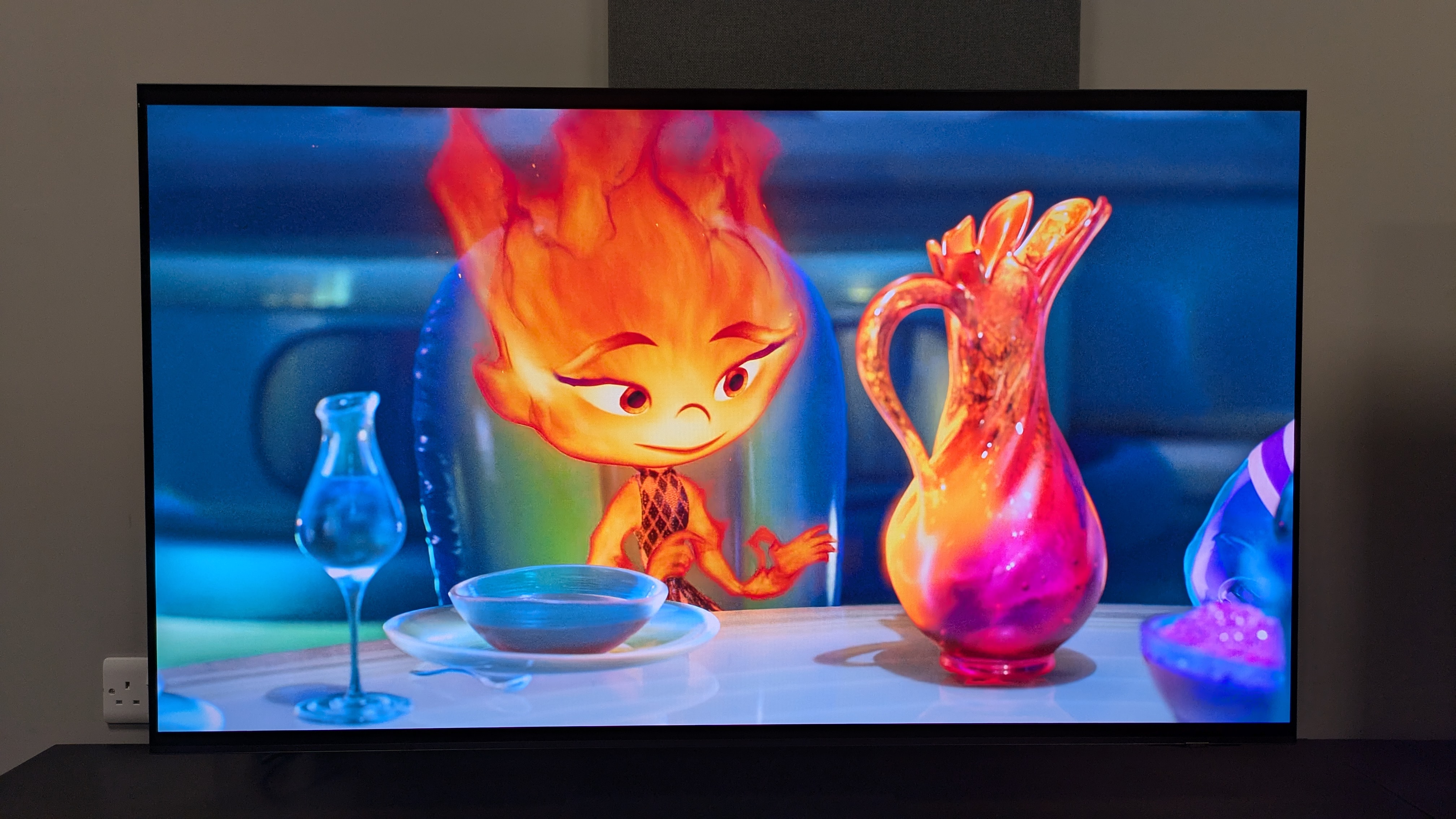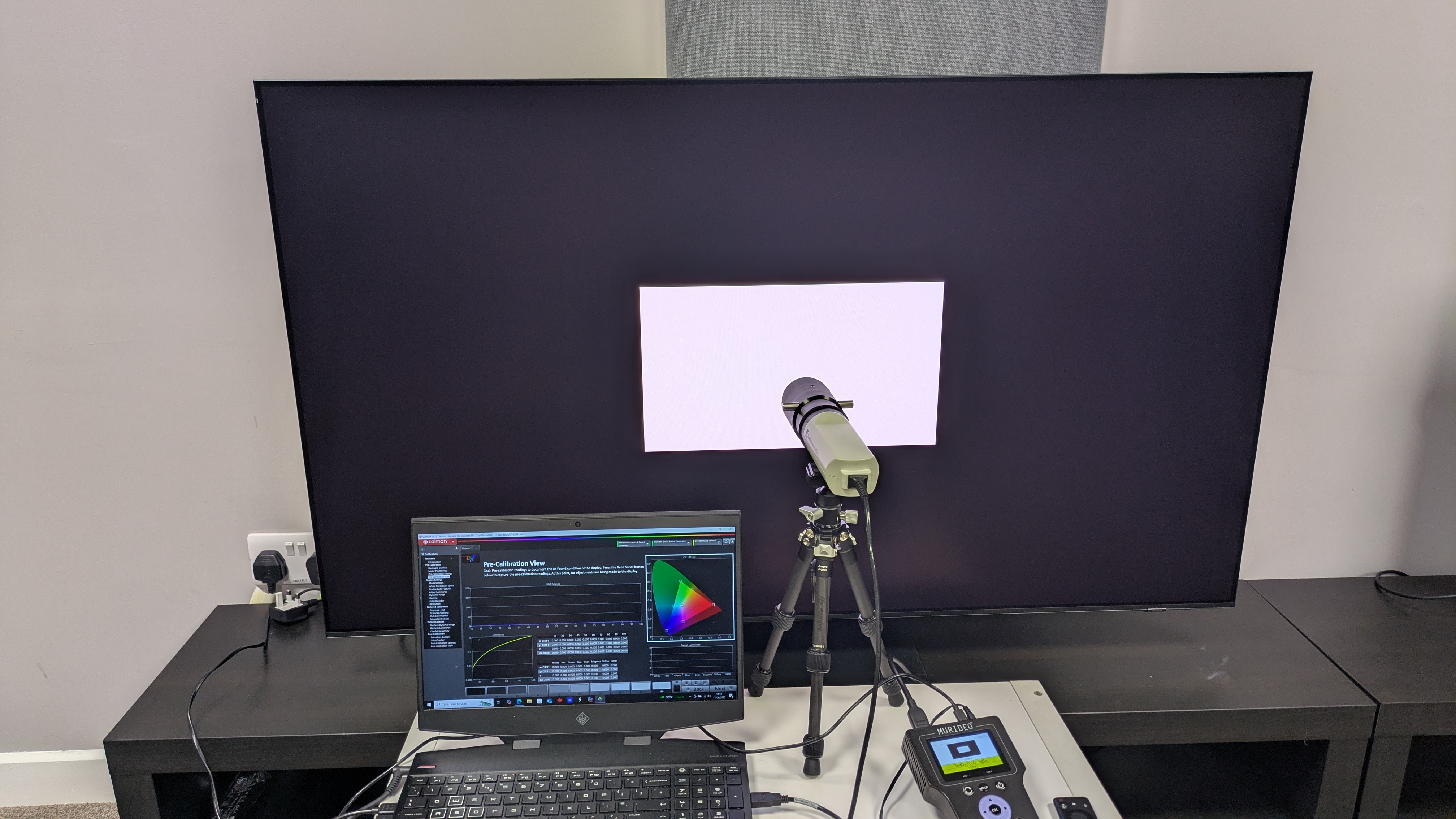The Samsung S95F OLED TV just became the first TV I've tested to hit this picture quality milestone
A new color gamut high

The Samsung S95F is currently sitting in TechRadar’s testing labs being put through its paces, with a full review imminent. My impressions so far are very positive, and although it’s got a tough opponent in the LG G5, its rival flagship OLED, the S95F has some very strong attributes.
We use both subjective and objective testing when evaluating TVs at TechRadar. Subjective testing involves watching movies and TV shows in both standard dynamic range (Blu-ray, broadcast TV, and DVD) and high dynamic range (4K streaming and 4K Blu-ray) formats to evaluate a TV's picture quality and sound quality. We also use gaming consoles to see if a TV can be counted among the best gaming TVs.
Objective testing involves measurements of peak and fullscreen brightness; color and grayscale accuracy; and HDR color gamut coverage, which tells us how much of the BT.2020 and UHDA-P3 color spaces the TV can display.
(You can learn more about how TechRadar tests TVs here.)
100!

When I used Portrait Displays’ Calman color calibration software to record measurements, the S95F showcased impressive figures across the board, hitting 2,132 nits HDR peak brightness and 390 nits fullscreen brightness in Filmmaker Mode. The latter is a record-high result for an OLED TV we’ve measured.
Fullscreen brightness is important for content like sports, where large areas of a single color – the green turf of a playing field, for instance – need to be evenly displayed without looking washed out. It is also useful for reducing reflections when viewing in bright rooms. Paired with its OLED Glare-Free screen, the S95F's high fullscreen brightness makes it one of the best OLED TVs for bright room viewing.
The S95F also clocked a color accuracy average of 2.6. The human eye is generally incapable of registering a result lower than 3, so this is a good score for the S95F.
Sign up for breaking news, reviews, opinion, top tech deals, and more.

During testing, the S95F also achieved a never-before-seen landmark in my experience: its UHDA-P3 HDR color gamut coverage clocked in at 100%. The P3 color space is used for mastering 4K Blu-ray and digital cinema releases, so the greater range of this color space a TV can cover, the more accurate a reproduction of a movie you’re going to see.
Not only that, but the S95F hit 89.3% coverage of the BT.2020 color space. For most of the best TVs we’ve tested in recent years, this result typically ranges between 71% and 82%.
Although BT.2020 isn’t as common as P3, more movies and 4K Blu-rays are starting to use it, such as Blade Runner: 2049, La La Land, John Wick 3 and Spiderman: Across the Spider-verse. So, as TVs improve BT.2020 color space coverage, they are better future-proofed for new movies down the line.
Unlike TVs, it's not uncommon for some projectors to clock in at over 100% BT.2020 coverage, something made possible by their use of a light engine with separate red, green and blue lasers.
A P3 coverage of around 95% is the minimum for accurately rendering a movie’s color, and the best mini-LED TVs we’ve tested have clocked in at that level, while OLED TVs generally hit between 96% and 99%. But the S95F is the first TV we’ve measured to hit the 100% mark.
Getting the balance right

During my time testing the S95F, its stunning color display has been one of its highlights, with movies like Elemental and Wicked popping off the screen with real vibrancy and flair.
An area where it would be great to see Samsung improve its OLED panels is black levels. The S95F is an improvement over its S95D predecessor here, but for real-world viewing, the S95F’s black levels still come up short of the richness of those found in OLED TVs with glossy screens, such as the LG G5.
But, it's difficult to imagine giving up the OLED Glare-Free screen, as it is so effective at removing mirror-like reflections, as I found testing it with three of the darkest 4K Blu-rays I use for testing.
I hope Samsung enhances its Glare-Free screen in future versions, and that we’ll eventually see equally deep black levels as with glossy-screen OLEDs.
You might also like

James is the TV Hardware Staff Writer at TechRadar. Before joining the team, he worked at a major UK based AV retailer selling TV and audio equipment, where he was either telling customers the difference between OLED and QLED or being wowed by watching a PS5 run on the LG 65G2. When not writing about the latest TV tech, James can be found gaming, reading, watching rugby or coming up with another idea for a novel.
You must confirm your public display name before commenting
Please logout and then login again, you will then be prompted to enter your display name.